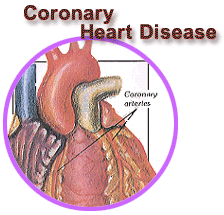- Home
- Editorial
- News
- Practice Guidelines
- Anesthesiology Guidelines
- Cancer Guidelines
- Cardiac Sciences Guidelines
- Critical Care Guidelines
- Dentistry Guidelines
- Dermatology Guidelines
- Diabetes and Endo Guidelines
- Diagnostics Guidelines
- ENT Guidelines
- Featured Practice Guidelines
- Gastroenterology Guidelines
- Geriatrics Guidelines
- Medicine Guidelines
- Nephrology Guidelines
- Neurosciences Guidelines
- Obs and Gynae Guidelines
- Ophthalmology Guidelines
- Orthopaedics Guidelines
- Paediatrics Guidelines
- Psychiatry Guidelines
- Pulmonology Guidelines
- Radiology Guidelines
- Surgery Guidelines
- Urology Guidelines
Removable balloon as effective as stent implant for small blocked arteries: ESC 2018

A removable balloon is as effective as a permanent stent implant for unblocking small coronary artery blockages, according to late-breaking findings from BASKET-SMALL 2 trial presented at the ESC (European Society of Cardiology) Congress 2018, and simultaneously published in The Lancet journal.
“The results of this trial move us a step closer towards treating small blocked arteries without having to insert a permanent implant,” said Jeger in an ESC press release.
He continued, “The BASKET-SMALL 2 trial met its primary endpoint of noninferiority for major adverse cardiac events at 12 months. This is a long-awaited milestone in clinical evidence for the drug-coated balloon technique, which has primarily been used for the treatment of in-stent restenosis.”
“The potential benefits of a stent-free option to treat small blocked arteries are numerous,” said Dr. Jeger. “With no permanent implant left after the procedure, the problem of tissue growth and clot formation within the stent is eliminated. In addition, there may be no need for prolonged treatment with anticlotting medicines, which has been controversial since it increases the risk of bleeding.”
“Drug-coated balloon angioplasty,” he added, “has the possibility to become the standard treatment for small blocked arteries. We will continue to monitor patients in the trial for a further 2 years for major adverse cardiac events, stent thrombosis, and bleeding.”
ASKET-SMALL 2 is the largest randomized trial designed to determine whether drug-coated balloons are as effective as drug-eluting stents for opening small arteries that have become blocked for the first time. BASKET-SMALL 2 is a multicenter, open-label, randomized noninferiority trial.
The two treatments were compared in terms of major adverse cardiac events after 12 months.
“We had a clinical problem,” Dr. Jeger explained, “during recent years, that drug-eluting stents were not working well in small coronary vessels. We were thinking about doing a trial testing the drug-coated balloon.”
“The drug-coated balloon,” he said, “is a balloon with a covering of a very lipophilic drug—paclitaxel—and it works very well for instant reopening. We did predilatation of the vessel and after successful dilatation, we were able to randomize the patient.”
Between 2012 and 2017, the trial enrolled 758 patients with a first-time lesion in an artery <3 mm in diameter. Average patient age was 68 years. Overall, 72% suffered from stable coronary artery disease and 28%, from an acute coronary syndrome.
Key Findings
- Overall, 72% suffered from stable coronary artery disease and 28%, from an acute coronary syndrome.
- After 12 months, rates of major adverse cardiovascular events for a stent (7.5%) and balloon (7.6%) did not differ.
- No statistical differences in rates of the individual components of the primary endpoint at 12 months were observed in the balloon vs stent groups: rates of cardiac death were 3.1% vs 1.3%, respectively.
- Rates of nonfatal heart attack were 1.6% vs 3.5%, respectively.
- Rates of target vessel revascularization were 3.4% vs 4.5%, respectively.
- The rate of major bleeding at 12 months was similar in the balloon (1.1%) and stent (2.4%) groups.
Patients were randomized to drug-coated balloon angioplasty (n=382) or second-generation drug-eluting stent implantation (n=376). The balloon was coated with iopromide and paclitaxel, and stents were covered with everolimus or paclitaxel. Dual antiplatelet therapy was given according to current guidelines.
After the procedure, patients were followed for 12 months for the occurrence of major adverse cardiovascular events, which included death from cardiac causes, nonfatal heart myocardial infarction, and the need for target vessel revascularization. Secondary endpoints included the single components of major adverse cardiovascular events and major bleeding after 12 months.
A standard treatment for opening blocked arteries is to insert an expandable drug-coated metal stent via a catheter. In smaller arteries, tissue may grow inside the stent (in-stent restenosis) or thrombose.
Drug-coated balloons, also inserted via catheter, are approved in Europe to reopen restenosed, stented arteries. The balloon is removed after the procedure.
Dr. Jeger remarked, “The two strategies—drug-coated balloons and drug-eluting stents—were exactly the same.”
He added, “We will wait for long-term follow-up because you can’t imagine that there are no late events of putting a stent into a vessel. I think the late events in 1 or 2 years will be very interesting.”
In small native coronary artery disease, DCB was non-inferior to DES regarding MACE up to 12 months, with similar event rates for both treatment groups.
For further reference log on to https://doi.org/10.1016/S0140-6736(18)31719-7

Disclaimer: This site is primarily intended for healthcare professionals. Any content/information on this website does not replace the advice of medical and/or health professionals and should not be construed as medical/diagnostic advice/endorsement or prescription. Use of this site is subject to our terms of use, privacy policy, advertisement policy. © 2020 Minerva Medical Treatment Pvt Ltd